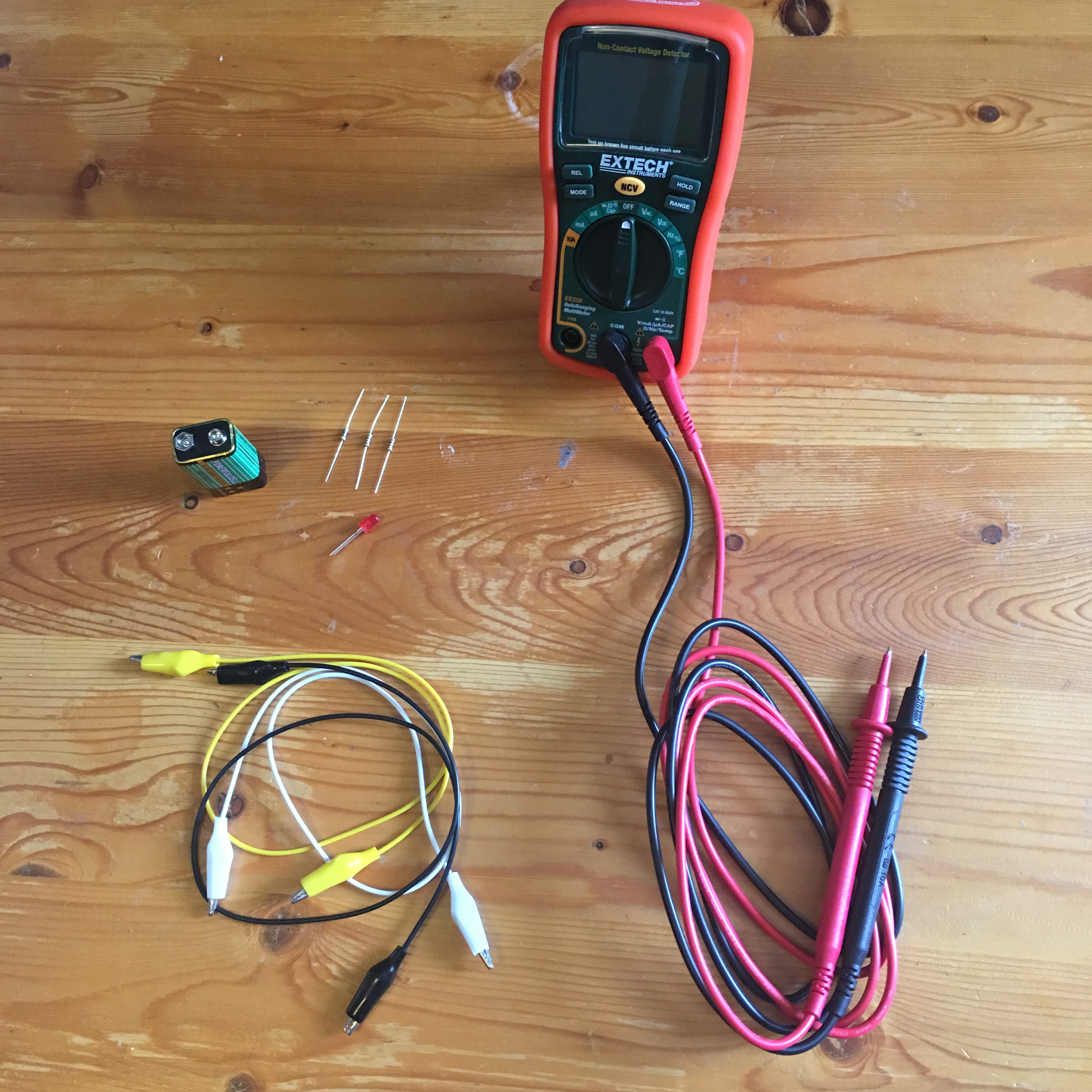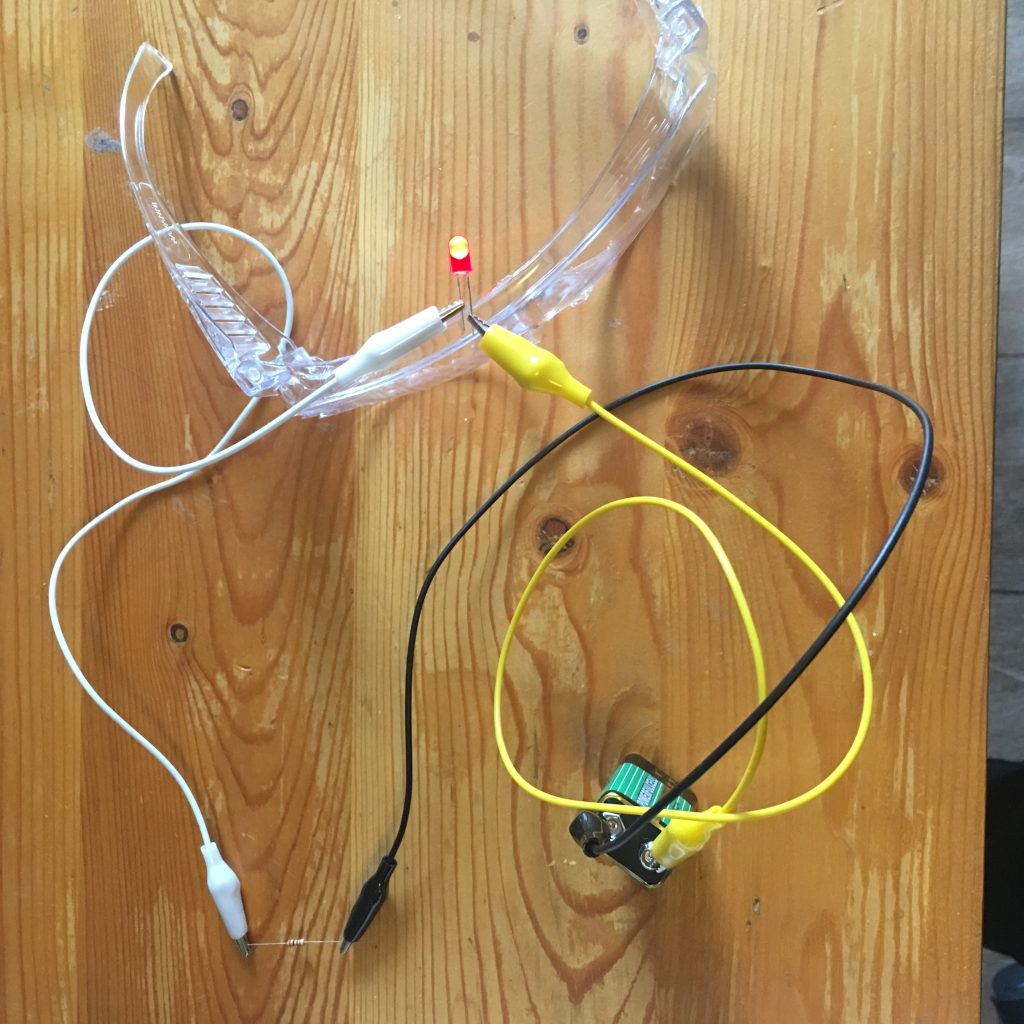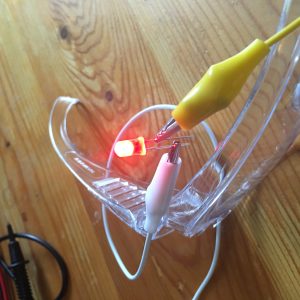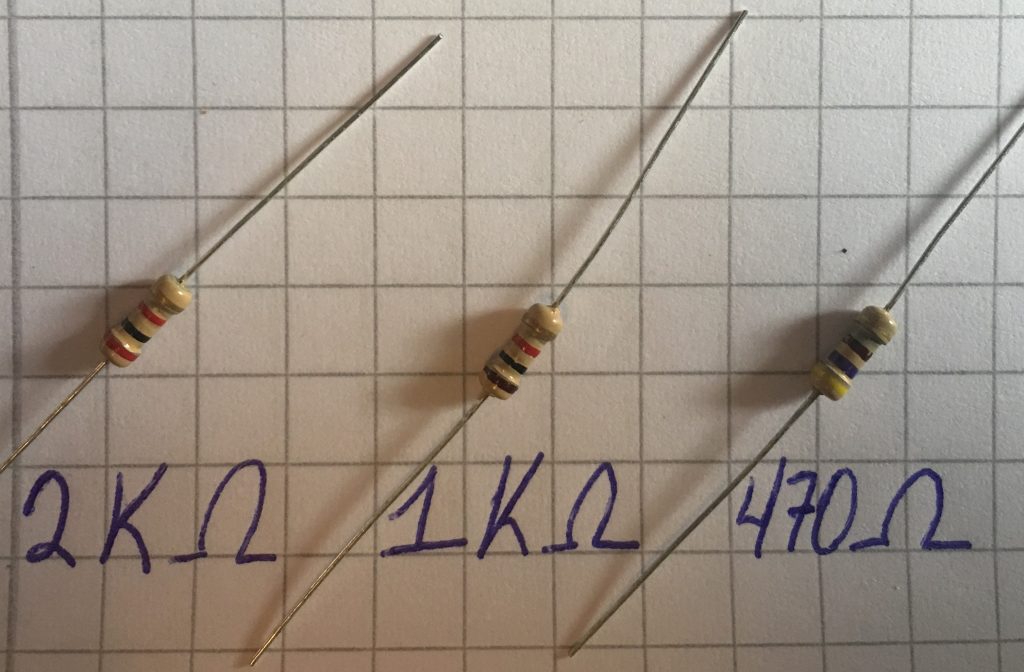It’s time, people, time to light up some LEDs!!!
* Lighting an LED
So, the thing is, I didn’t have a 2.2KΩ resistor at hand, as you can see in the picture above, (now that you know how to decode the value of resistors from the Fundamentals: Decoding Resistors section).
My resistor is Red Black Red Gold = 2 0 2 5% = 2000 Ohms with a 5% tolerance.
A 2.2K (2000) resistor would show the colors Red Red Red Gold = 2 2 2 5% = 2200Ω, 5% tolerance.
Still, the Resistor is still perfectly usable for the educational lesson the experiment wishes to transmit, which is: How does resistance affect current?
Here are the other resistors that will be tested:
So, let’s begin!
It’s alive!!!…..ever so slightly.
Circuit with a 2KΩ resistor Circuit with a 1KΩ resistor
Circuit with a 470Ω resistor
As the resistance is decreased (by changing the resistor) the LED shines more brightly since more current is going through it!
* Checking a Resistor
These are the values the color coding of each resistor translates into.
The first resistor is 2KΩ (and not 2.2kΩ). The multi-meter shows a value of 1.993KΩ which is within the tolerance specified by the golden stripe (5%).











